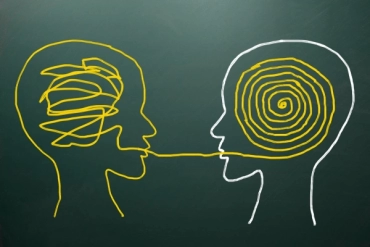Visual Communication
What Is Visual Communication?
Visual Communication involves the use of pictures, schedules, charts and other visual aids to teach our students.
This powerful approach benefits young children because it clearly conveys information in an alternate form to the traditional read-and-write style of learning. Our students greatly benefit from such visual aids due to their structured organisation and engaging interfaces.
Why Does It Work?
Visual Communication Simplifies Complex Information
Children with learning disabilities may find complex information more difficult to process when presented in chunks of written text. Visual communication breaks down intricate concepts into engaging and readable pictures and charts.
For example, a chart depicting the proper tooth brushing techniques can be helpful in guiding children how to clean their teeth.
Hence, our students are able to better absorb and retain the information taught to them in lessons. Their learning is thus enriched and they are able to make the most out of their time in class.

Visual Communication Reduces Reliance On Verbal Speech
Spoken instructions can be challenging to process for children with limited language skills or auditory processing difficulties. Therefore, visual instruction offers an alternative channel of understanding.
For instance, a video clip can effectively explain to our students a new concept. Or, an image can substitute for verbal directions.

Visual Communication Promotes Independence
Visual communication offers clear cues and prompts. Hence, this provides our students with a sense of direction that helps them discover their own agency. Children can thus be empowered to develop their own routine and independence.
For example, our lessons incorporate picture schedules. This enables children to learn how to prepare for their daily classes, since they know what to expect for the day.

Visual Communication Enhances Memory
Experts have proven that visual aids function as memory prompts. Thus, by incorporating visual aids into our lessons, we assist our students in recalling vital instructions, sequences and processes.
Through repeated observation and interaction with visual tools, our students are able to strengthen their memory and recall skills. This increases their retention and makes learning even more effective for them.

Too Long, Didn’t Read?
That’s okay! Basically, visual communication is a powerful approach that benefits all learners. It enriches their overall learning outcomes. Thus, it is a valuable tool that all educators should consider incorporating into their teaching repertoire.
But What Are The Benefits Of Visual Communication?

Promotes Clearer Understanding
Visualisation offers a deeper insight for our learners because of its clean and effective presentation. This reduces misunderstandings and frustration, which is greatly helpful in facilitating learning.
For example, our lessons incorporate a chart with step-by-step instructions for our students. This prevents errors and confusion, while promoting effective learning.

Boosts Engagement
Interactive charts and picture-based activities make lessons more enriching for our students. This sparks student interest and encourages their sense of intrinsic motivation. Hence, they are more likely to engage in self-directed learning.
For instance, our lessons incorporate visual instruction platforms with gamification elements. This transforms our students’ learning into fun and rewarding experiences.

Increases Focus
Since visual tools translate abstract concepts into tangible images, learning content becomes more vibrant and interesting. This holds our students’ attention and encourages class participation.
Moreover, visual aids help our students focus on specific tasks and thus minimise distractions. For example, our lessons use charts with key information highlighted. This helps our students concentrate and grasp classroom content.

Develops Planning And Organisation Skills
Schedules and visual routines introduce our students to the concept of sequence and planning. They are able to better manage their time and complete their assignments.
Also, visual tools break down complicated processes into simple steps. This is presented in a clear sequence, which helps children learn how to organise their work effectively. In the long term, this prioritising is a useful life skill.

Encourages Self Esteem
Visual tools aid self-directed learning. By better understanding the lesson content, students can take charge of their own learning without having to rely on adult assistance.
For example, we teach our students how to read and understand a bus route map with pictures alongside the text. This empowers them to take public transport independently, which is hugely rewarding for them and thus boosts their confidence.
Too Long, Didn’t Read?
That’s alright! Essentially, using visuals such as pictures, charts and diagrams improves communication with our learners. It promotes understanding and development across diverse learning styles.
By offering a clear and accessible way to understand information, visual communication cultivates independence and encourages self-confidence.
